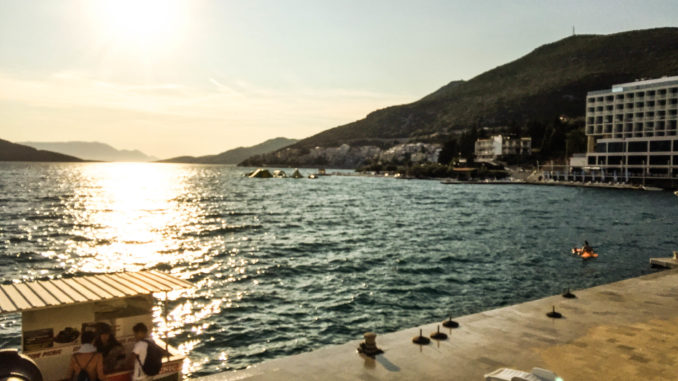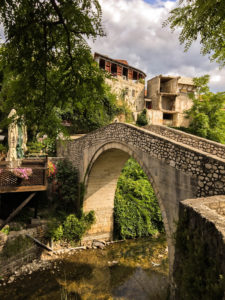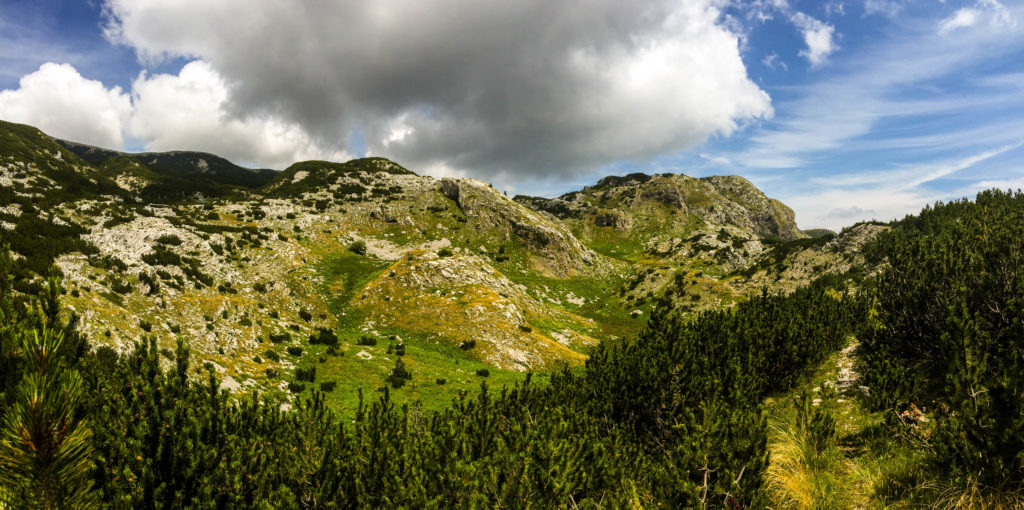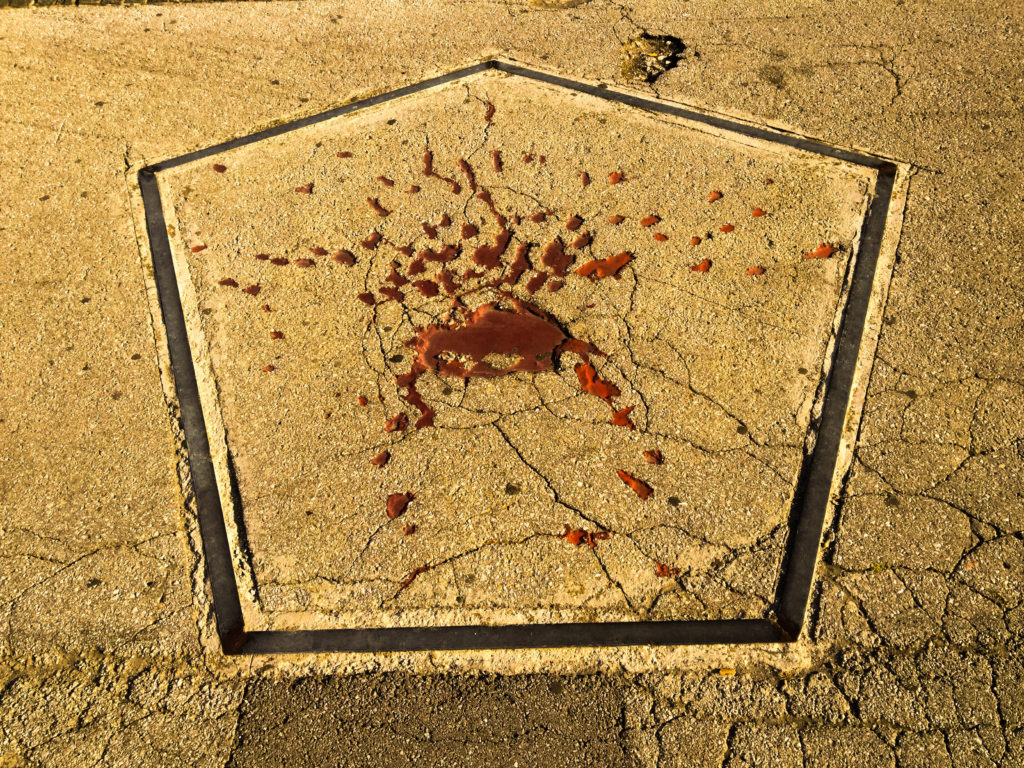
Travelling to Bosnia
Getting to Bosnia was easy. Even though Bosnia isn’t in European Union, you don’t need any special Visa or be afraid of anything during the entrance to the country. Bosnia and Herzegovina is much closer, than I originally thought, the flight takes less then 1 hour from Vienna.
General Tips
1) Car rental and driving in Bosnia
While we met some tourists who were using public transportation in Bosnia (train/bus), I would recommend renting a car. Travelling becomes much easier and you can just go (or stop) wherever you want. The cheapest cars (mini or economy class) starts at 200€ / per week, with unlimited km. Needless to say, roads in Bosnia aren’t in a good shape and can’t be compared to the rest of Europe. There are almost none highways (only couple of km around Sarajevo) and in the rest of the country you will mostly find roads with 1 line per direction. Bear in mind, that Bosnia is mountainous country. If you ride behind a truck, you can wait quite some time, till you’ll be able to overtake it. Most of the drivers in Bosnia are polite and we didn’t have any accidents. However we met A LOT of police patrols, checking the speed, so adjust your speed accordingly.
Just a warning, if you want to go to Neum (Bosnian only access to the sea), beware that the only road leading there (“M17.3”) is in bad conditions. Most of the time only one car can fit on the road.
2) Shopping in Bosnia
Basically, you have two options. Either shopping in small local shops. Or slightly bigger and much beter supplied supermarkets – Konzum or Bingo – two main supermarket chains in Bosnia. Even though we don’t like supermarkets much, it’s much easier to buy in these while in Bosnia. The range of products is comparable to other countries.
3) Money and Cost of living in Bosnia
Bosnia uses “Konvertibilna marka” (KM) as official currency, however you can usually also pay directly with euro. The exchange rate is commonly taken as 2KM = 1€. Living in Bosnia is very affordable and even if you don’t come from western world, you will feel rich there. Airbnb is also a thing in Bosnia, so getting an appartment wasn’t a problem, even in high season (July). We found a very nice appartment few minutes of walking from city center, for 20€ per night. We paid also the same price for a night in a mountain hut, including dinners (yes, plural, locals are very hospitable), drinks, breakfast and everything.
The average salary in Bosnia is around 320€ per month.
4) Typical Food in Bosnia
Cevapi. This one is the most traditional food you could get in Bosnia. The meat is served with traditional bread and sliced onions. There are even dedicated restaurants (Ćevabdžinica), where they serve only this meal and nothing else. Pure specialization:)
Other typical great meal is Klepe – dumplings with minced meat. If you would like to take something to go, try Burek – pastry filled with meat / potatoes / spinach / cheese / …
5) Political situation
- Even though war ended in December 1995, the country is still devided. There are still so many fresh memories and stories beneath the surface
- Bosnia has 3 presidents at the same time. One for each ethnic (Bosniak, Serbs and Croats)
- 49% of Bosnia and Hertzegovina terriory is Republica Sprska (do not mistake it with Republic of Serbia)
- Kids at school are taught different versions of history, based on their ethnic (class is divided and each ethnic will learn from a different teacher)
- Almost every car you will meet in Bosnia is Volkswagen
- People refer to Jugoslavia and Tito as “the good times”
- Landmine contamination in Bosnia is still relevant
Travel Tips in Bosnia
There surely are much more places to visit in Bosnia and Hertzegovina, this is only the subset of places we managed to visit during a one week we had.
1) Bijambare Caves
We went to Biambare caves jus for a quick trip, to stretch our legs after flying to Bosnia. The nature park is very well preserved, with clear paths to and from the caves. You have to pay small entrance fee at the parking lot. Some caves can be visited with this basic fee, however you can enter the main cave complex only with another ticket, which you can also buy right when entering the cave from the guide. Even though you enter Biambare caves as a group, it’s totally up to you, how fast/slow you want to walk through it. There is a tour guide, but he doesn’t give you any speech, he just watch that no tourists are lost. The temperature in caves is low, even in summer months, so don’t forget to bring at least some warm clothes or jackets.
2) Mostar
 Mostar was one of the best places in Bosnia, which we can definitely advise anyone to visit. The historical city center is beautifully renowated and is part of the UNESCO World Heritage.
Mostar was one of the best places in Bosnia, which we can definitely advise anyone to visit. The historical city center is beautifully renowated and is part of the UNESCO World Heritage.
We could also highly recommend Free Walking Tour in Mostar lead by Ševko. The tour takes you all around Mostar and you will learn a lot about history of Bosnia and Hertzegovina, break up of Jugoslavia and also about the Bosnian War.
Mostar is well known for it’s historical bridge over river Neretva. That is also the main attraction – jumping off the bridge in historical city center. Mostar is also popular destination from Croatia as it’s only 2 hours driving from Makarska resort.
3) Hiking Veliki Vilinac and Hajducka Vrata
Hiking in Bosnia is kind of unique. There aren’t many online maps in high details and even Google Maps were completely lost many times. The best map, which we used for both car navigation and hiking in mountains, was mapy.cz. Mainly because the map layer with hiking routes. The well known route in Bosnia is Via Dinarica, epic trail stretching across 7 counties.

The main problem with hiking in Bosnia, at least for us, was the uncertainty, how far is the destination. Some locals said it’s 3-4 hours. While a blog on internet mentioned 6-8 and mapy.cz showes 5h 42m. Well the reality was, it took us about 6 hours from the parking lot to the hut under Veliki Vilinac + 1h to Hajducka Vrata. I also have to mention, we didn’t meet anyone (except at the hut) during the whole 2 day trip. The only living creatures we met were 6 wild boars, but they luckily didn’t pay any attention to us. One of Bosnia’s main issues is the landmine contamination. It just doesn’t feel good, when you have to second guess each step.
The sleepover on mountain lodge Veliki Vilinac is highly recommended. Keep in mind tha the hut isn’t open all year long, so just make sure to send an email before. Someone from the hut volunteers will go up the mountain and will prepare the hut for you. It’s also possible to order a dinner and breakfast, which we can also only recommend. The hospitability was great, we had a lot of fun in the evening and there was plenty of local food.
4) Kravice Waterfalls
Kravicke waterfalls are one of the most visited places in Bosnia and Hertzegovina. They are even more popular in July and August, when the air temperatures can rise up to 35°C. We were there on such hot day, however the water was still cold, refreshing and crystal clear. And yes, it’s allowed to swim there. I would recommend going to Kravicke waterfalls as early as possible (they are open open 24h) just to avoid crowds. Around lunch time the place was full of tourists. There are couple of restaurants and you can buy food/drinks/fruits directly next to the waterfalls.
Mala Kravice Waterfalls
15-20 minutes walking down the left side of the river from Kravice Waterfalls you will find Mala Kravice. Beautiful waterfalls and great and easy walk around the river. There were hardly any people around even on busy sunny day, so if you get tired of all the people at the main waterfalls, this could be a nice change. However you can’t probably swim at Mala Kravice.
5) Neum
The road to Neum was quite painfull, because of the bad condition of the road. It’s was quite a long ride just to get to the sea for few hours, but we wanted to try it. Neum is very nice city, with many small hotels and few beaches. We didn’t see any sand beach, only a rocky one. The sea was very clean. Unlike Croatia, Bosnia has only 13km of shore, so if you want to take a bath in a salty water, Neum is the only access for you. The city itself feels like a small town, but the athmosphere was very nice, relaxed and also a little bit touristic. But in a good way.
6) Tjentište
If you want to hike to the highest mountain in Bosnia – Bosanski Maglić 2,386 metres – you can start the hike from Tjentiště. Most people will come for the Tjentište war memorial. The monument was built in 1971 to remember the Battle for Sutjeska in 1943, in which the Nazi forces tried to break the resistance and capture their leader Josip Tito.
7) Sarajevo
Sarajevo is a place with very interesting and sad history. The city was under a siege for 46 moths during the war, while people were actually living in their basements. Even though the war ended 25 years ago, the country is still heavily divided. You can see it on the streets, where signs “Srebrenica – never forget” are still so powerfull.
The city itself felt little bit “clumsy”. The main historical part – Old Bazaar (Baščaršija) – is very nice. It reminds Jerusalem, as we saw it a year ago. The narrow streets, filled with people, shops and street food. Nobody enjoyes crowds, but I have to say, I didn’t feel crowded in Sarajevo. Yes, there were plenty of people, but yet, it wasn’t that bad. At least, when considered that it was the peak of summer.
The food was similar to the rest of Bosnia. Lot of Cevapi and Burek, but what stood up a lot, was the Baklava. This nuts&honey amazing food could keep you happy till the rest of your days:)


Leave a Reply